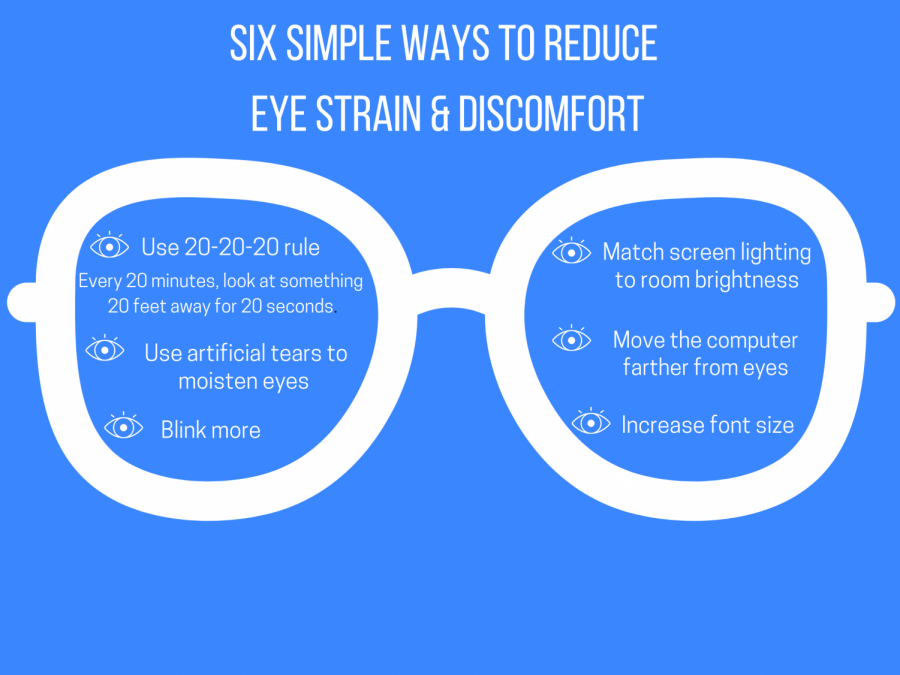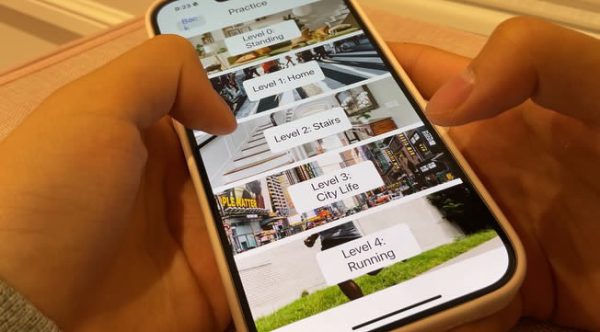Insight into tired eyes
Eye specialists relieve fears regarding the consequences of virtual learning
January 13, 2021
As students and teachers stare into screens for hours on end, many have questioned whether their eyes will be damaged. Surprisingly, eye specialists believe that although technology can result in eye discomfort, it is unlikely to cause permanent harm.
“I am worried that [extended screen time] will affect my eyesight,” sophomore Sweta Das said. “I have definitely experienced [effects from] the brightness of my screen and being on it for so long.”
Eye strain is the most common eye-related discomfort that is caused by online learning. This condition occurs when the eye focuses on a single object for an extended period of time.
“When we look at something close-up, such as a computer screen or a cell phone, the lens of the eye naturally contracts,” said Dr. Esen Akpek, a professor of ophthalmology at Johns Hopkins University. “If you’re looking at a screen for prolonged periods, the lens doesn’t have the chance to relax, which can lead to eye fatigue.”
When focusing on a screen, people blink less, a crucial step that helps to keep the eye moist and evenly covered in tears. As the surface of the eye becomes dry, it can develop uneven patches, which blur vision.
“Concentration on a visual task might slow the blink rate which will decrease the spreading of the tear film across the cornea,” said Dr. Steven Sherman, an ophthalmologist whose practice focused on retinal disease. “The eye needs to blink to spread the tear film over the cornea.”
As the eye becomes drier, reading can be more difficult.
“Your reading speed decreases because you can’t see very well, which requires prolonged reading and visual fatigue, beginning the cycle again,” Akpek said.
Symptoms of eye strain include headaches, irritated eyes, blurriness or difficulty keeping the eyes open. However, these are temporary and unlikely to cause permanent damage to those without previously existing conditions.
“If interventions are not sufficient, then an eye exam is indicated to look for an underlying problem,” Sherman said.
Computer users have become increasingly concerned regarding the emission of blue light, which is a type of light ray that is released by both the sun and the screens of technological devices. Blue light blocking glasses are heavily advertised to consumers as a solution for the possible effects of blue light. The market for the glasses is continuing to expand and users report favorable experiences using them.
“I think they have been useful, because my eyes don’t feel the same amount of strain they used to feel before I got the glasses,” freshman Sarah Beach said.
Despite positive reviews and increasing demand, eye specialists reject the efficacy of blue light blocking glasses for preventing eye strain.
“Blue light is not a cause of eye strain. The natural crystalline lens and the cornea of the eye are able to block excessive blue light,” Akpek said.
Those considering purchasing blue-light blocking glasses, which retail from $10 to over $100, should know they are unlikely to protect the eyes.
“For most people ‘blue-blockers’ are worthless,” Sherman said. “As one ages, the lens in the eye becomes more and more yellow. This by itself will block some blue light, probably as much as blue-blockers.”












